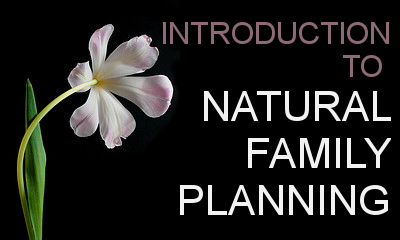 We are happy to welcome Josh and Stacey Noem as guests at Together for Life Online. Here they share a brief introduction to Natural Family Planning (NFP) based on their experience working with couples preparing for marriage.
We are happy to welcome Josh and Stacey Noem as guests at Together for Life Online. Here they share a brief introduction to Natural Family Planning (NFP) based on their experience working with couples preparing for marriage.
Working with couples in marriage preparation, we always get to the conversation about how the couple intends to plan their family. More often than not, the man goes silent and looks at the woman to see how she will respond.
Kind of odd.
It’s not as though women are capable of fertility alone. Quite the contrary, the gift of fertility in marriage, by its very nature, is shared. We can have no fertility without our spouses. It is not my fertility or your fertility. There is only our fertility. So, why should a man leave all of the planning about fertility to the woman?
It is hard to blame the men. So much of what goes into reproductive care is geared towards women. Our culture does not leave much for the men to do but show up.
What is a couple to do, then? How can a couple put as much energy and intentionality into sharing the gifts and responsibilities of their fertility as they do into managing finances and free time, choosing linens and lawnmowers, and planning dream vacations?
What is Natural Family Planning (NFP)?
Natural Family Planning (NFP) is a method that couples use to both avoid and achieve pregnancy and gain deeper understanding of and appreciation for the gift of sexuality.
The basics are these: a woman’s body has natural cycles of fertility and infertility. Modern science has determined highly reliable indicators such as body temperature and cervical mucus, to identify fertile and infertile phases of a woman’s cycle. The couple charts the indicators daily (electronically or on paper) and then uses that knowledge to achieve or avoid pregnancy.
That’s it.
No chemicals. No pills. No hormones or devices. No side effects.
Just a husband and a wife using their bodies and their brains.
Multiple methods exist under the umbrella of NFP. Some methods are what are called “single-index,” which use only one symptom or indicator for determining fertility. The most well known of these single-index methods are the Billings Ovulation Method and the Creighton Model FertilityCare System. Other methods are “multi-index,” and are often referred to as sympto-thermal methods. Such organizations as Northwest Catholic Counseling and the Diocese of Harrisburg teach these.
NFP Effectiveness: Does it Work?
Couples can expect NFP effectiveness ratings of up to 99 percent depending upon the method, proper training, and consistent use. Medical research has repeatedly shown that using NFP correctly is just as effective as using artificial means of contraception.
Of course, if a couple is not committed to using the method or does not use it properly, it does not work—which holds true as well for methods of artificial contraception.
National organizations and individual dioceses train instructors and offer NFP courses in person or online. Many husbands or soon-to-be husbands going through NFP classes remark on how much they learn about the bodies of their wives. Indeed, when a couple shares charting responsibilities, a husband is often able to anticipate shifts in the cycle of his spouse and to better understand changes in temperament that are linked to her fertility cycle. This mutual deeper knowledge can be of great benefit to a healthy marriage.
The Impact of NFP on Marriage
NFP is often described as a “blueprint for a good marriage” because using it encourages open, honest, and direct communication as well as mutual understanding and respect within the most intimate sphere of a couple’s sex life.
Because the couple has to be on the same page about their intentions for their current state of life—are we ready for children now or not—they have to be on the same page about their fertility as well. That only happens through conversations that tie in many different aspects of marital life: finances, the availability of time and health, personal desires about the size of their family, the timing of the birth of children, a sense of what God is calling them to at this time, etc.
It is not that every time a couple is ready for intercourse, they have to sit down over a cup of tea and negotiate their life plan together. Rather, using NFP keeps that conversation fresh and in the forefront for a couple, so that it may surface from time to time during a hike or a cross-country drive. NFP weaves those conversations into the fabric of marital life because they are always relevant. These conversations are a big help as a couple seeks to grow in unity throughout their marriage.
On a couple’s wedding day, they receive many gifts, but none are bigger than the gift of fertility that they share with one another. NFP facilitates responsible use and stewardship of that gift, and it helps couples work towards unity in body and mind.
(photo credit: tanakawho)







